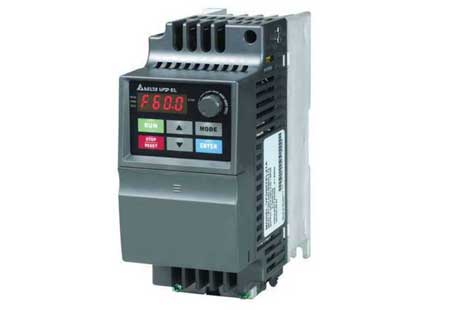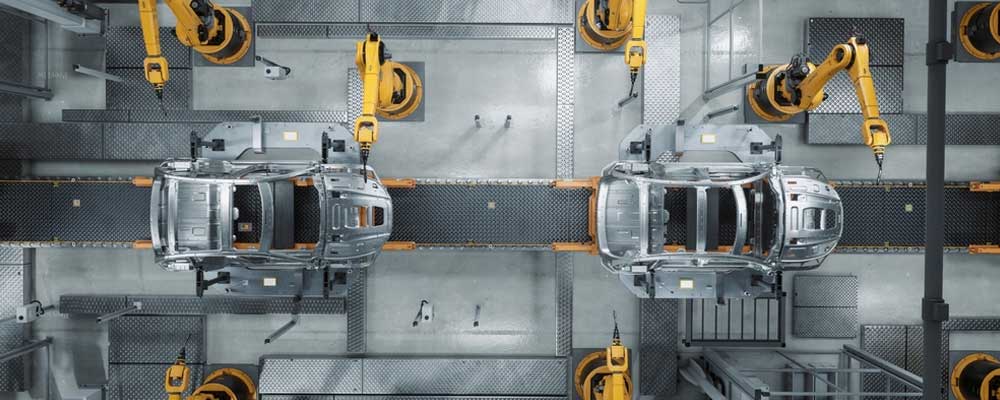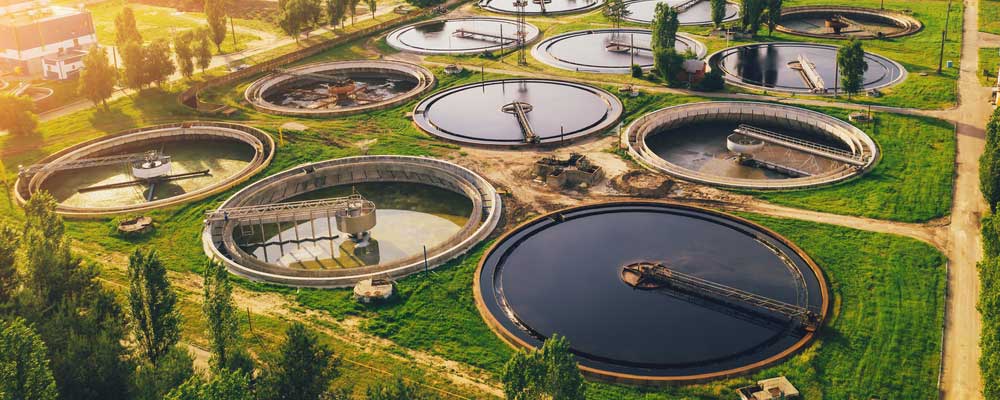Which Is Better VFD or VSD?
In the world of industrial automation, two technologies stand out for their critical role in controlling motor speeds: Variable Frequency Drives (VFD) and Variable Speed Drives (VSD). These systems are pivotal in optimizing the performance of electric motors used across various industrial applications.
What is Variable Frequency Drives (VFD)?
Variable Frequency Drives (VFD), as the name suggests, primarily control the speed of an electric motor by varying the frequency of the electrical supply to the motor. A prominent example of this technology is the Delta VFD, known for its reliability and advanced features. These drives adjust the power input’s frequency and voltage to modulate the motor’s speed and torque, offering precise control crucial in various industrial applications.
What is Variable Speed Drives (VSD)?
Variable Speed Drives (VSD), on the other hand, are a broader category of drive systems that include any type of drive capable of adjusting the speed of a motor. VFDs fall under this category, but VSDs can also use other methods to control speed, such as mechanical variators or hydraulic drives.
The importance of VFDs and VSDs in modern industrial applications is profound. They are not just tools for efficiency and energy conservation; they are the backbone of precise and controlled motor operation. By enabling motors to run at varying speeds, these drives play a pivotal role in reducing unnecessary energy consumption, enhancing process precision, and prolonging equipment lifespan.
As an industrial engineer, your role in selecting the right drive system is crucial. The choice between a VFD and a VSD can significantly impact the efficiency and effectiveness of your operations. By the end of this blog, you will have a clear understanding of both technologies, empowering you to make an informed decision about which is better suited for your specific industrial needs: VFD or VSD.
Table of Contents:
Principles and Functioning of VFDs and VSDs:
Understanding the basic principles and functioning of Variable Frequency Drives (VFDs) and Variable Speed Drives (VSDs) is crucial for industrial engineers who aim to optimize motor control and efficiency in their applications.
How VFDs Work:
Variable Frequency Drives control the speed of an electric motor by varying the frequency and voltage supplied to the motor. Here’s a simplified breakdown of their operation:
Power Conversion: Initially, the VFD converts incoming alternating current (AC) power to direct current (DC) using a rectifier.
DC Intermediate Stage: The DC power is then temporarily stored in a DC link. This stage smooths out any fluctuations in the power supply.
Inversion Back to AC: Finally, an inverter converts this DC power back into AC. However, the frequency and voltage of this AC can be varied, allowing precise control over the motor’s speed and torque.
How VSDs Work:
Variable Speed Drives, a broader category, include any type of drive that can control the speed of a motor. This includes VFDs but also extends to mechanical and hydraulic systems. The basic principle behind VSDs is to modulate the speed at which the motor operates, which can be achieved through different mechanisms depending on the type of drive.
While VFDs specifically alter electrical inputs to control motor speed, VSDs as a category encompass a wider range of technologies for speed control. As an industrial engineer, understanding these differences is key to selecting the right type of drive for your specific application, ensuring optimal performance and efficiency.
Comparative Analysis: VFD vs. VSD:
When it comes to controlling motor speed and torque in industrial settings, understanding the technical differences between Variable Frequency Drives (VFDs) and Variable Speed Drives (VSDs) is essential for making informed decisions. Let’s delve into a comparative analysis focusing on their control mechanisms and efficiency.
Technical Comparison:
VFDs:
Control Mechanism: VFDs specifically control the frequency and voltage of the power supplied to an AC motor. This precise control allows for smooth adjustments in motor speed and torque.
Application: Ideal for applications requiring precise speed control, such as conveyor systems or pumps, where the load varies or needs to be regulated.
VSDs:
Control Mechanism: VSDs encompass a broader range of technologies, including mechanical and hydraulic systems, to control motor speed. The control can be less precise compared to VFDs, especially in mechanical systems.
Application: Suited for applications where the precision of speed control is less critical or where existing infrastructure favors non-electrical solutions.
Energy Consumption:
VFDs: Known for their high energy efficiency. By adjusting motor speed and torque to the exact needs of the application, VFDs can significantly reduce energy consumption.
VSDs: Efficiency varies widely depending on the type. Mechanical systems, for example, might not match the energy efficiency of VFDs.
Performance Output:
VFDs: Offer high performance with precise control over motor speed and torque, leading to improved process control and product quality.
VSDs: While they provide flexibility in speed control, some types (like mechanical drives) may not offer the same level of performance consistency as VFDs.
While VFDs stand out for their precise electrical control and energy efficiency, VSDs offer a broader range of speed control solutions, some of which might be more suitable depending on the specific industrial application. As an industrial engineer, weighing these factors against the requirements of your project will guide you in choosing the most appropriate technology.
Applications and Suitability:
In the world of industrial automation, selecting the right drive technology – be it a Variable Frequency Drive (VFD) or a Variable Speed Drive (VSD) – hinges on understanding their specific applications and suitability. Let’s explore where each of these technologies excels.
VFDs: Where They Shine:
Precision Control Applications:
Example: Conveyor systems in manufacturing plants.
Why VFDs: They offer exact control over motor speed and torque, essential for synchronizing conveyor speeds with other processes.
Energy-Sensitive Environments:
Example: HVAC systems in large facilities.
Why VFDs: They adjust motor speed to match the load requirement, leading to significant energy savings and reduced operational costs.
Applications Requiring Variable Load Handling:
Example: Pump systems in water treatment plants.
Why VFDs: They can efficiently handle varying flow rates, adjusting motor speed to match the demand without wasting energy.
Reading Further:
VSDs: Their Ideal Scenarios
Less Precision-Dependent Applications:
Example: Fans in industrial cooling systems.
Why VSDs: In scenarios where precise speed control is less critical, VSDs (especially mechanical or hydraulic types) can offer a cost-effective solution.
Heavy-Duty Operations:
Example: Mining equipment.
Why VSDs: Certain types of VSDs, like fluid couplings, are well-suited for heavy-duty applications where robustness and durability are key.
Applications with Existing Non-Electrical Infrastructure:
Example: Older manufacturing plants with established mechanical systems.
Why VSDs: They can integrate with existing mechanical or hydraulic systems, avoiding the need for extensive electrical upgrades.
VFDs are the go-to choice for applications requiring precise control, energy efficiency, and adaptability to variable loads. On the other hand, VSDs find their niche in less precision-critical applications, heavy-duty environments, or where existing infrastructure favors non-electrical solutions. As an industrial engineer, aligning the drive technology with the specific demands and constraints of your application is key to achieving optimal performance and efficiency.
Advantages and Limitations of VFDs and VSDs:
In industrial engineering, understanding the pros and cons of Variable Frequency Drives (VFDs) and Variable Speed Drives (VSDs) is crucial for making informed decisions.
Let’s delve into their advantages and limitations.
VFD Advantages:
Precision Control: VFDs offer exceptional control over motor speed and torque, crucial for processes requiring fine-tuning.
Energy Efficiency: By matching motor speed to load requirements, VFDs significantly reduce energy consumption.
Flexibility: They can be programmed and adjusted for a wide range of applications, making them versatile.
VFD Limitations:
Cost: VFDs can be more expensive upfront compared to some VSDs, particularly in simpler applications.
Complexity: The installation and programming of VFDs require a higher level of expertise.
Potential for Electronic Interference: VFDs can generate electromagnetic interference, which may require additional mitigation measures.
Reading Further:
VSD Advantages:
Simplicity: Many VSDs, especially mechanical types, are simpler in design and operation.
Durability: Certain VSDs are robust and well-suited for harsh industrial environments.
Cost-Effectiveness: For applications where precise control is not critical, VSDs can be a more economical choice.
VSD Limitations:
Less Precision: Generally, VSDs do not offer the same level of precise control as VFDs.
Energy Efficiency: While they control speed, they may not be as energy-efficient as VFDs in applications with variable loads.
Integration Challenges: Some VSDs, particularly non-electrical types, might pose challenges in integration with modern control systems.
The choice between VFDs and VSDs depends on the specific requirements of your application. VFDs stand out in scenarios demanding high precision and energy efficiency, while VSDs are more suited for applications where simplicity and robustness are key. As an industrial engineer, weighing these advantages and limitations against the needs of your project will guide you to the most appropriate and efficient solution.
Cost Implications and Energy Efficiency:
When it comes to selecting between Variable Frequency Drives (VFDs) and Variable Speed Drives (VSDs), two critical factors for industrial engineers to consider are cost implications and energy efficiency.
Let’s break these down in a straightforward manner.
Initial Investment:
VFDs typically have a higher initial cost compared to many VSDs. This is due to their complex electronic components and sophisticated control capabilities. However, this investment can be justified by the benefits they offer, especially in applications requiring precise control.
Installation and Maintenance:
The installation of VFDs can be more complex, potentially requiring specialized knowledge. Their maintenance might also be more involved, given their electronic nature. In contrast, many VSDs, especially mechanical ones, are simpler to install and maintain.
Long-Term Savings:
While VFDs may have a higher upfront cost, they can lead to significant savings over time. This is primarily due to their superior energy efficiency, which reduces operational costs.
Energy Efficiency:
VFDs: These drives excel in energy efficiency. They adjust the motor speed and torque to the actual load, avoiding unnecessary energy consumption. This feature is particularly beneficial in applications with varying load requirements, leading to substantial energy savings.
VSDs: While VSDs do control speed, they may not match the energy efficiency levels of VFDs, especially in variable load scenarios. However, in applications with consistent load, their efficiency can be quite comparable.
Impact on Different Settings:
In settings where motor speed needs frequent adjustment, VFDs are more energy-efficient. In contrast, for applications with a constant load or where fine control isn’t critical, VSDs can be a cost-effective solution without a significant compromise in energy efficiency.
The choice between VFDs and VSDs should be guided by a balance of initial costs, long-term savings, and the specific energy efficiency needs of your application. For industrial engineers, understanding these aspects is key to selecting the right drive that not only fits the budget but also optimizes operational efficiency.
Case Studies and Real-World Examples:
In the world of industrial automation, real-world examples and case studies offer invaluable insights into the practical applications and benefits of Variable Frequency Drives (VFDs) and Variable Speed Drives (VSDs).
Let’s delve into a couple of instances where these technologies have been effectively implemented.
Case Study 1: VFD in a Manufacturing Plant
Scenario: A large manufacturing plant was facing issues with its conveyor belt system. The system was either running at full speed or not at all, leading to inefficiencies and increased wear and tear on the equipment.
Solution: The plant decided to implement a VFD system. This allowed for the speed of the conveyor belts to be precisely controlled based on the production needs.
Outcome: The introduction of VFDs led to a significant reduction in energy consumption, as the motors were no longer running at full speed unnecessarily. Additionally, there was a noticeable decrease in maintenance costs due to reduced mechanical stress on the conveyor system.
Lesson Learned: VFDs can be a game-changer in scenarios where variable motor speeds can optimize operational efficiency and reduce costs.
Case Study 2: VSD in a Water Treatment Facility
Scenario: A water treatment facility was using pumps that operated at a constant speed, leading to inefficiencies and higher energy costs, especially during off-peak hours when the demand was lower.
Solution: The facility installed Variable Speed Drives (VSDs) on their pumps. These drives adjusted the pump speed according to the water demand, avoiding unnecessary energy usage.
Outcome: The VSDs led to a more efficient operation, with energy savings of up to 30%. The facility also observed an extended lifespan of the pumps due to reduced mechanical stress.
Lesson Learned: In applications like pumping, where the load varies, VSDs can offer a cost-effective solution to improve efficiency and extend equipment life.
Best Practices:
Assess the Application: Before choosing between a VFD and a VSD, thoroughly assess the application requirements, including load variability and the need for precise control.
Consider Long-Term Benefits: Look beyond the initial investment and consider long-term operational savings, especially in terms of energy efficiency and maintenance costs.
Stay Informed: Keep up with the latest advancements in VFD and VSD technologies to ensure the most efficient and up-to-date solutions are being implemented.
These case studies highlight the importance of selecting the right drive technology based on specific industrial needs. For industrial engineers, understanding these real-world applications is crucial in making informed decisions that optimize performance and efficiency.
Future Trends and Developments:
As we look towards the future in the field of industrial engineering, it’s clear that Variable Frequency Drives (VFDs) and Variable Speed Drives (VSDs) are on the brink of significant advancements.
Let’s explore some of the emerging technologies and predictions for their future applications and improvements.
1. Integration with IoT and Smart Technologies:
Trend: The integration of VFDs and VSDs with the Internet of Things (IoT) and smart technologies is a major upcoming trend. This integration allows for real-time monitoring and control of drives remotely, leading to enhanced efficiency and predictive maintenance.
Impact: For you, as an industrial engineer, this means being able to optimize operations from anywhere, predict maintenance needs, and reduce downtime significantly.
2. Enhanced Energy Efficiency:
Trend: Future developments in VFD and VSD technology are likely to focus heavily on improving energy efficiency. This includes advancements in power electronics and control algorithms that minimize energy losses.
Impact: This trend is particularly important in the context of growing environmental concerns and the push for sustainable industrial practices. It means lower operational costs and a smaller carbon footprint for your projects.
3. Improved Compatibility and Flexibility:
Trend: We’re seeing a move towards drives that are more universally compatible with various types of motors and applications. This includes the development of drives that can easily adapt to different power sources and motor types.
Impact: This development will simplify the process of selecting and implementing drive systems, making it easier for you to find solutions that fit a wide range of applications.
4. Advanced Diagnostics and Self-Healing Capabilities:
Trend: Future VFDs and VSDs are expected to come equipped with advanced diagnostic tools and self-healing capabilities. These features will enable the drives to detect issues early and, in some cases, rectify them without human intervention.
Impact: For industrial engineers, this means reduced maintenance time and costs, as well as increased reliability and uptime of the equipment.
5. Compact and Modular Designs:
Trend: As space becomes a premium in industrial settings, the demand for compact and modular VFDs and VSDs is rising. These designs allow for easier integration into existing systems without the need for extensive space or retrofitting.
Impact: This trend is particularly beneficial in urban and space-constrained environments, allowing for more flexibility in system design and layout.
The future of VFD and VSD technology is bright, with a focus on smart integration, energy efficiency, flexibility, advanced diagnostics, and compact designs. These advancements are set to make your role as an industrial engineer more efficient, cost-effective, and innovative, allowing you to stay ahead in a rapidly evolving industry.
Conclusion:
When deciding between Variable Frequency Drives (VFDs) and Variable Speed Drives (VSDs), it’s all about the specific needs of your project. VFDs are great for precise control. They let you adjust motor speed and torque very accurately, which is super useful for tasks that need specific speed settings. They’re also energy-efficient, helping you save on electricity and extend your equipment’s life.
VSDs, meanwhile, are more about straightforward speed control. They’re a good fit when you just need to change the motor speed without the extra precision. They can be easier to use and more budget-friendly in simpler setups.
Pick a VFD if your job needs really detailed speed control. Go for a VSD if you just need to adjust the speed without all the bells and whistles. As technology gets better, both VFDs and VSDs are evolving, so keeping up with these changes is key to making the best choice for your industrial needs.



